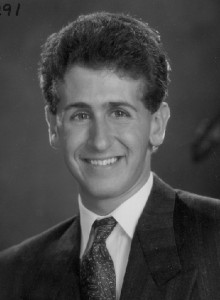Remembering Michael: 18 Years & Counting
By GuestBy Harriet Burak
There is a saying that I have often heard: “The more things change, the more they stay the same.”
As fall approaches, the calendar reminds me (as if I need that to remember) that my youngest child died on September 9, 2004. It will be 18 years since Michael died of a heroin overdose after fighting and losing his battle with addiction. Many of you know Michael’s story from the articles I have written for the Citizen.
Okay, so what has stayed the same? Illegal drugs are still killing our children. On August 11, I was listening to Dan Ray’s radio program on WBZ-1030, and the guest that night, the Plymouth County DA, was speaking about the huge loss of life attributed to drugs. My son, Michael, died from a drug overdose. As per the district attorney, Fentanyl and other opioids caused the deaths of 70,000 people in our country last year. Fentanyl is a synthetic opioid. It is poison. When added to marijuana or other drugs and sold on the streets, it can be lethal. Kids don’t know what they are buying. And they continue to die.
A recent issue of People magazine included two stories tied to drug use. Entitled “Inside a Life Cut Short,” the article told the story of Michael K. Williams, known for his starring role in several television series, who died in September 2021 at ag 54 of a Fentanyl-laced accidental overdose following a long battle with addiction. Another story that was still unfolding at the time in People was that of Hollywood celebrity Anne Heche, who died at age 53 as a result of a horrendous car crash. Heche had been known to have fought the illness of addiction and it is believed that illegal drugs may have contributed to the behavior that caused the car crash.
Eighteen years after my son’s death, addiction is still leading to deaths. Illegal drugs are still sold on the streets. “Criminals,” those producing the synthetic opioids and selling them, are still responsible and should be held accountable for their actions.
Another constant is a mother’s love for her child and desire to protect. On WGBH one night I was listening to a program where several people were telling personal stories. One such story was about a young man using drugs. The mother explained her commitment to being there for her son by sharing a story called “The Runaway Bunny” by Margaret Wise Brown. Published in 1942 and popular today, the story reads, “Once there was a little bunny who wanted to run away. So he said to his mother, ‘I am running away.’ ‘If you run away,’ said his mother, ‘I will run after you. For you are my little bunny.’”
The little bunny continues to threaten to run away throughout the pages of the book, and each time the mother bunny assures him that she will follow and always be there for him. When my son was using, I did what I could do to be there for him. But I couldn’t save him.
Although it is true that some things haven’t changed in the past 18 years, there is reason to hope. In 2004, few people talked openly about drug addiction. It was spoken about in whispers and thought of as a moral failing.
Addiction is now referred to as substance use disorder (SUD). It is recognized by many as a disease. Here in Norfolk County, many of our communities have established coalitions to open up the conversation and take measures towards prevention. In 2013, the Canton Alliance Against Substance Abuse (CAASA) was formed. Their mission is to reduce the use of drugs and alcohol in the community by encouraging healthy decision making and providing resources that address prevention, intervention, treatment and recovery throughout the lifespan. Membership is open to the public and community support continues to be needed.
In 2013, a conference was held in Boston by an group called the Compassionate Friends, a mutual assistance, self-help organization offering friendship, understanding, and hope to bereaved families following the death of a child. I attended a session called “Dealing with the Distinctive Bereavement Needs of Parents who Lose a Child to a Drug Overdose.” I learned many things. Drug addiction did not define my son. I learned to hate the disease while loving the person. I learned that I couldn’t fix Michael, but I can honor his memory. I learned that it is important to remember and to accept … no shame or blame, just love from the heart.
In 2017, to honor the memory of those lost to and struggling with the disease of substance use disorder (SUD), CAASA started what is now the annual Celebration of Life event. Held just days ago, the program includes music, readings, a speaker, a candle-lighting ceremony, a slideshow and refreshments.
Learn to Cope is a peer-led support network that offers education, resources, and hope for family members and friends who have loved ones affected by substance use disorder. Learn to Cope was founded in Massachusetts in 2004, the year my son died.
Facebook and social media, to the extent they are in our lives today, didn’t exist in 2004. Now, although there are definitely negatives regarding social media’s impact on our children, there is no question that social media allows us to share ideas and get the word out. Let’s continue to keep the conversation going. Together, going forward, let’s make the next 18 years really count. Working together in educating ourselves and our children, speaking aloud and no longer in whispers, we can continue to make change possible.
Short URL: https://www.thecantoncitizen.com/?p=90988











